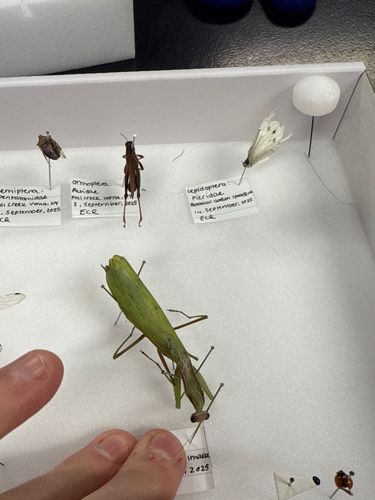Praying Mantis (specifically a European Mantis for the one in the image)
Scientific Name: Mantis religiosa
Order & Family: Mantodea: Mantidae
Size: Typically 5 to 9 cm (2 to 3.5 inches) in length, with females generally larger than males.

Natural Habitat
Grasslands, meadows, gardens, and agricultural fields, often found on plants where they can camouflage and ambush prey.
Diet & Feeding
Carnivorous. They are ambush predators that feed on a variety of insects, including flies, moths, butterflies, crickets, grasshoppers, and sometimes even small vertebrates like lizards or frogs.
Behavior Patterns
Known for their distinctive 'praying' posture with folded forelegs. They are visual hunters, camouflaging themselves among foliage and waiting patiently for prey to come within striking distance. They have excellent eyesight and a rapid strike reflex. Females are notorious for sexual cannibalism, often eating the male during or after mating.
Risks & Benefits
Benefits: Praying mantises are beneficial insects in gardens and agricultural settings as they help control populations of various pest insects. Risks: No risks to humans; they are generally harmless, though a large mantis might deliver a pinch if handled carelessly.
Identified on: 9/19/2025